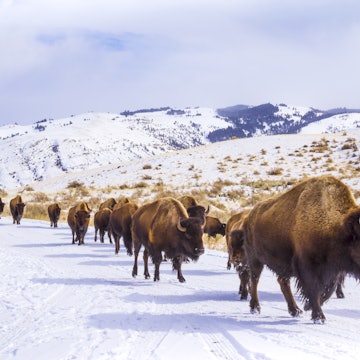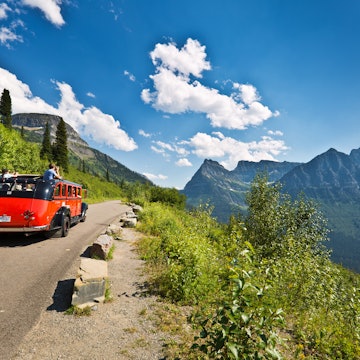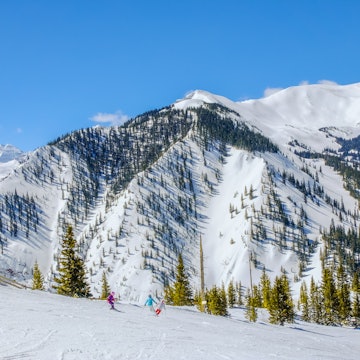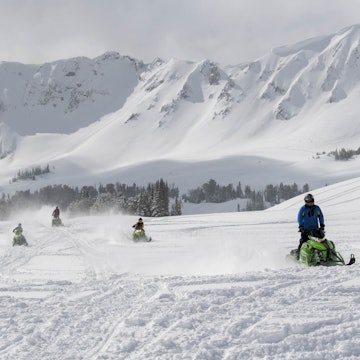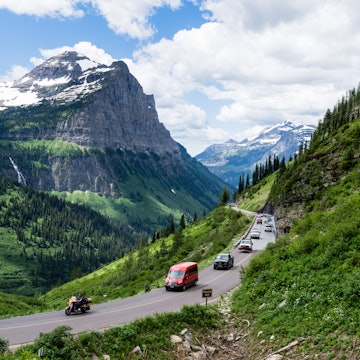

Meeting the wildlife in Montana © Abigail Marie / Shutterstock
Montana is legendary as the gateway to Yellowstone and Glacier National Park, but there's plenty to do in the state that doesn’t cost a cent. From art walks and wild trekking to ghost towns and farmer’s markets, Montana’s vastness hides all sorts of intriguing ways for budget-conscious travelers to pass the time.
As an added plus, Montana is not generally a pricey destination, with the exception of luxury mountain resorts such as Yellowstone Club. On a very modest budget, you can wander the Big Sky state like a real frontier explorer, getting in touch with the cultural heartbeat of America's beautiful back-country.
Here are 11 of the best ways to experience what Montana has to offer without opening your wallet.

Drive the Beartooth Highway
The Beartooth Highway – a stunningly scenic stretch of US-212 – spans both Montana and Wyoming, but no matter which direction you come in from, it’s free to drive. We recommend starting in Red Lodge, a lively adventure hub in the southern part of Montana, keeping an eye out for mountain goats, grizzly bears, and stunning mountain views as you meander through the epic scenery. There are numerous pull-ins at scenic viewpoints and hikes of every length, providing access to Yellowstone-style terrain without the accompanying national park fees. At 68 miles, it should take around 3 hours to drive the Beartooth Highway in full, though it’s wise to allow an extra few hours for stops.
Hit the farmer’s markets
It’s said that there are more cattle than people in Montana, and it's certainly true that the state is a major agricultural hub. With so many commercial and hobby farms operating across the state, there are plenty of opportunities to pick up fine, fresh organic produce, sample local foodstuffs, and shop for homemade crafts at weekly farmer’s markets. Farming is ubiquitous throughout the state, so check to see if the town you’re headed to is hosting a market any time soon.
From spring through fall, farmers in the northwest of the state are particularly active in showing and selling their wares. Every Tuesday night in Whitefish, foodies gather at Depot Park to buy fresh organic veg from Two Bear Farm and fully loaded acai fruit bowls from Mountain Berry Bowls. On Thursday, neighboring Columbia Falls has a great lineup of vendors in a rustic-chic outdoor location along the main road. Note however that most markets shut up shop during winter.
Go on an art walk
With its picturesque mountains and glittering rivers, Montana is an inspiring place, and the state attracts artists working in every medium. Many towns and cities in Montana host regular art walks to showcase local talent. with visits to local galleries and studios to peruse the work of local artists while sipping on wine and beer and munching small snacks. Of course, the goal is to sell art, but there's no obligation to buy, and many people join the walks just to see the kinds of work on offer.
Art Walks typically take place monthly on a set day of the week. In Bozeman, walks run on the second Friday of each month from July through September. In Missoula, walks are on the first Friday of the month, while Whitefish’s Gallery Nights take place on the first Thursday of the month. This is by no means a comprehensive list, so be sure to ask about local art walks wherever you’re headed.
Look for ghosts in Virginia City
Virginia City is a classic Old West ghost town, sitting frozen in time in the countryside southwest of Bozeman. And unlike other similar abandoned towns in Montana, this one is free to explore. Gold was discovered here in 1863, and Virginia City briefly became a boomtown for prospectors. Confederates fleeing the south ended up here during and after the Civil War, giving the settlement a distinctive Southern vibe.
Although hobbyists still scour the surrounding countryside in the hope of striking it rich, today Virginia City is predominantly a relic, an intriguing collection of well-preserved buildings reflecting an iconic time in American history. It feels a little like a Western movie set, only here the buildings are the real deal.
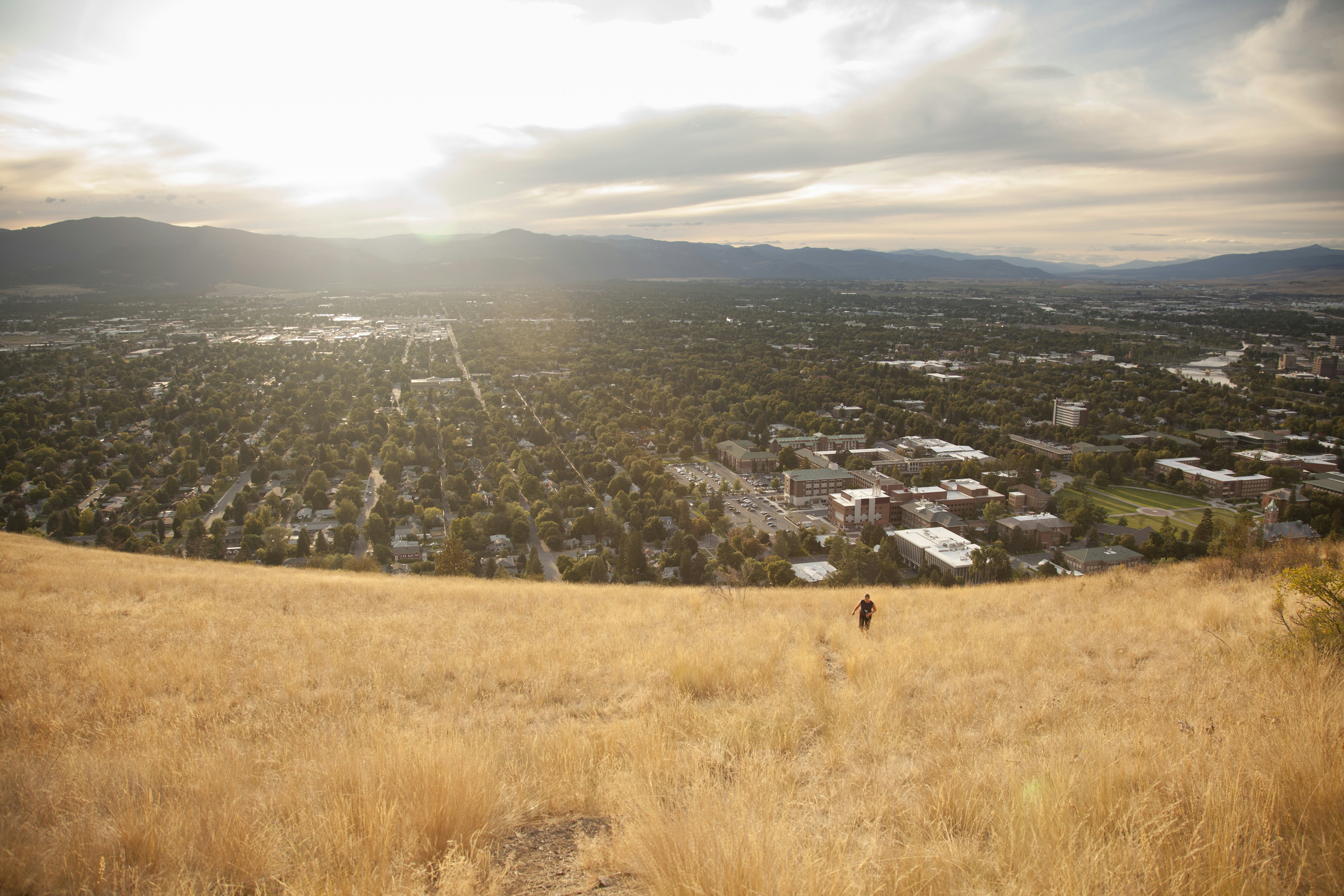
Visit the Garden of One Thousand Buddhas in Arlee
The Flathead Indian Reservation may not seem the most obvious location for a large-scale Buddhist shrine, but Montana is full of surprises. This peaceful religious center sits on 10 acres of grounds, surrounded by rolling hills, with the eponymous thousand Buddhas and lines of Tibetan-style chortens (stupas) creating a circular pattern evoking the eight-spoked Dharma wheel. With the peaceful country setting, many people do indeed find a sense of peace wandering this tranquil monument. The garden is just north of Missoula and can be visited during daylight hours any day of the year.
Go sledding in winter
Many of Montana’s most popular winter activities come at a price – this includes skiing, dog sledding, and ice fishing (which requires a permit). Sledding, however, is free for anyone with something to slide on and access to a snow-covered hill. Snowfall in Montana tends to be fluffy and plentiful, and thanks to the mountainous terrain, there are plenty of hilly slopes to speed down. If you don't have a sled, these can be easily and cheaply procured at local grocery stores.
Break out the binoculars to look for birds
Wildlife abounds in Montana, thanks to ample areas of wilderness and a relatively small human population. Even in the more densely populated areas of the state, wildlife is frequently spotted, from bears to beavers. Birdwatching is particularly excellent throughout the state, so keep your eyes focused on those big skies. At any time of year, there's a chance of spotting bald eagles, golden eagles and ospreys, plus many other birds of prey. Springtime migrations bring in species such as sandhill cranes and purple martins. Montana Audubon offers detailed information about which species visitors to the state can expect to see at different times, and where the best birding hotspots can be found in every region.

Attend the Flathead Cherry Festival
Cherries are one of several fruits that thrive in Montana, thanks to the long, warm days and short, cool nights of summer, and there's a lively festival in Polson in July celebrating that bounty. Every year, cherry growers and cherry lovers convene at the southern end of Flathead Lake, with vendors selling freshly picked cherries, cherries baked into pies or jarred into preserves, and a nearly endless selection of crafts adorned with cherry motifs. It’s a delightful and free event, and a big hit for local and visiting families and other cherry aficionados.
Search for huckleberries
Related to blueberries, huckleberries are the pride of Montana, growing wild in mountainous areas of the state, and they come ripe in late summer. They are notoriously difficult to farm, which is why foragers run to the hills every August in search of these purple beauties in the wild. Picking huckleberries can be complicated, as locals are often reluctant to share intel on where the best berries are found. If you can't get any tips, spend some time searching gentle slopes, particularly forest clearings with direct or partial sunlight. Bears are big huckleberry fans too, so bring your spray along.
Take a hike
Many of Montana’s wonderful state and national parks charge an entry fee for hikers, but there are plenty of trails through other wilderness areas that are free for public use. Some are well-organized, like the Whitefish Trail, 55 miles of walking and cycling tracks through the forests on the outskirts of Whitefish, just north of Kalispell's Glacier Park International Airport.
Other walks take a more backcountry approach, calling out to serious outdoors types. If you'd like some company on the trails, the organization Wild Montana runs a popular program of wilderness walks from May to August. Whether you follow the map or go off-piste, be sure to let someone know your hiking plans, including when you intend to be back, and carry bear spray for protection.
Go to the Missoula Art Museum
The goal of the Missoula Art Museum is to make art accessible to everyone, including those living in rural communities. It's free to explore the interesting exhibitions inside, as well as the art-filled park outside, though donations are encouraged to help keep art an integral part of the Montana narrative. Artworks on display tend to reflect life in the American west, with an emphasis on Indigenous expression. The museum can be found in the town of Missoula, worth a visit all by itself, but it's closed on Sundays and Mondays.
You may also like:
Get lost in big sky country: the very best places to visit in Montana
Montana's 8 best hikes are unsurpassed in the US
Why winter is the perfect time to spot Yellowstone’s wildlife









